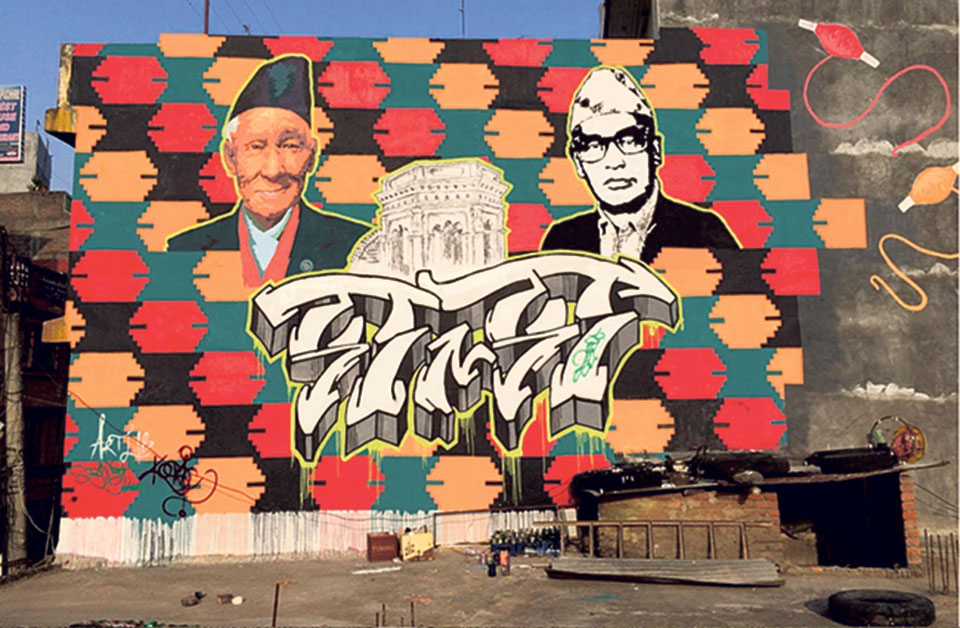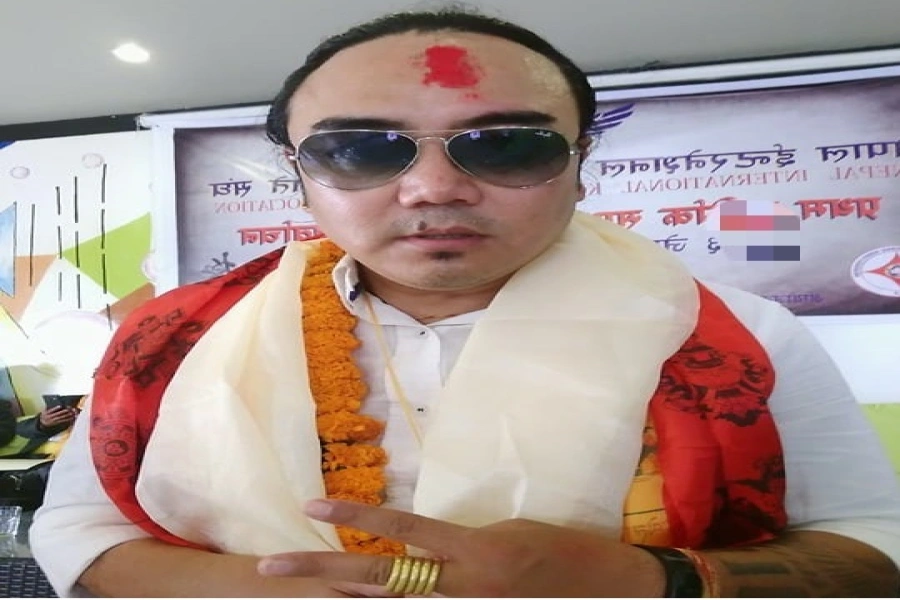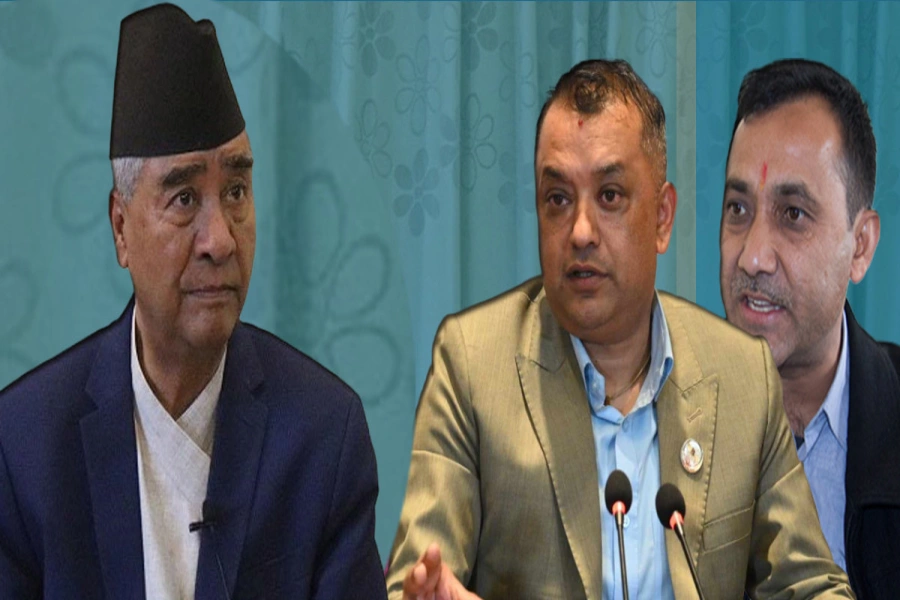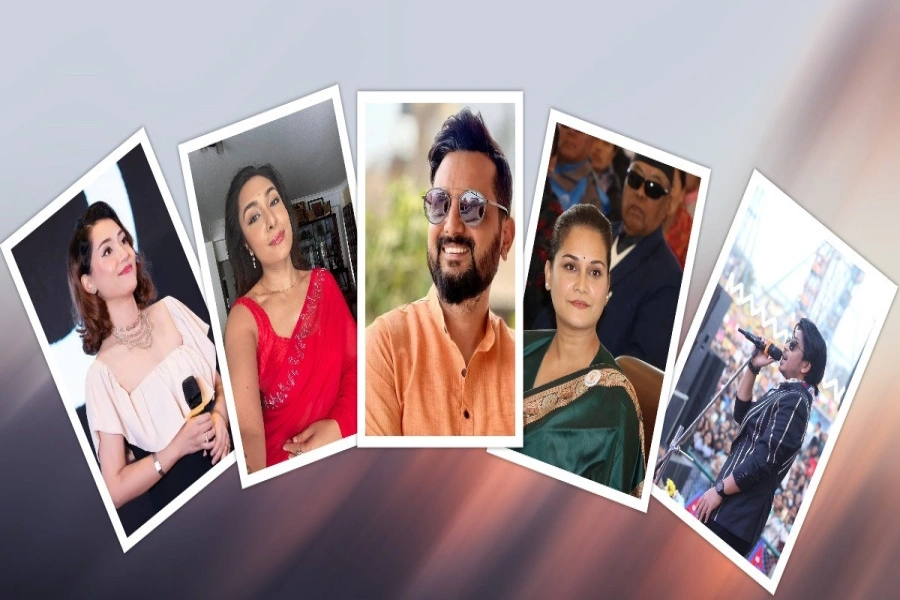Graffiti or murals, for a while now, have been a huge part of the emerging art culture. While earlier we used to see a graffiti or two at a few streets across town, now we can spot one almost everywhere we go. Sometimes we see the artists hard at work in the scorching sun and watch in amazement. We might click a few pictures or tell our friends about a certain mural that caught our attention but we seldom, if ever, find ourselves wondering about the artist whose names often get lost in a corner of the life sized art.
To change that, The Week caught up with three spectacular mural/graffiti artists of Nepal. Here, we bring to you their stories.
Driven by passion

Having gone to college in the US, Sneha Shrestha (Imagine) felt Nepal’s education system wasn’t up to the mark. She felt students were often forced to think like their teachers did instead of being encouraged to build their own imagination. So she turned to arts to help kids think creatively and, in 2013, founded the Children’s Art Museum, Nepal.
‘A Great British Spraycation’: Banksy’s new seaside murals

“When I was a child, art helped me express myself creatively. It was my favorite hobby that later turned into a passion and is now my career. That’s the reason why I wanted to give children or youths like me a separate space where they could develop skills, play with colors, and enjoy letting their imagination roam free,” she says.
Besides being the owner of the Children’s Art Museum, Shrestha is also the first artist to combine Nepali alphabets or Sanskrit scriptures with the American style of graffiti. She has showcased these unique creations not just at various exhibitions but has also splashed them across multiple walls in Boston, San Francisco, Bali, Istanbul, Geneva, and Copenhagen, to name a few cities.
She has many happy customers that include top institutions and business ventures like Harvard, Reebok, Montana Cans, Trip Advisor, Neiman Marcus, and Red Bull. However, she says POW!WOW! Nepal, a campaign where many national and international artists come together and decorate rural areas using paints and sprays for a social cause, is a project that’s close to her heart.
Before working on POW!WOW! Nepal, Shrestha had already gained enough experiences through her stint with POW!WOW! Worcester. Then she was offered to visit Nepal for the same project. Getting a chance to return to her hometown, where she had grown up, and that too to work on a project that meant a lot to her made her happy and apprehensive at the same time.
“I was sharing the walls with various international artists and yet could communicate with the locals using my native language. My parents and friends were there, watching me work, and I was using my skills for the betterment of my own country. My murals had come home,” she says.
Shrestha is also a member of Few and Far Crew. It’s a team of women who are dedicated to beautifying the streets, while supporting other women. She confesses the crew is the reason why she is confident today and is able to stand her ground. It gives her strength, she says.
It wasn’t luck that helped Shrestha reach where she is today. She made a bold move to follow her passion and then the dots started connecting on their own. What she really appreciates about art is its power to change people’s perception about things as the same art can have different meanings for different people. “It’s this magic of art and the power of artists to create that magic that keep me going,” she concludes.
A self-taught artist
 Ashin Gurung (STREW) used to be a Bboy dancer and is still really into the hip-hop culture. But this dance fanatic never thought his love for music and moves would actually take him towards the world of art as well. He was watching random videos of Bboying when he first noticed the murals in the background. He started researching about the graffiti culture even though it was a relatively new concept in Nepal. Even today, he considers that phase a motivating factor for him to start his journey as a professional graffiti/mural artist.
Ashin Gurung (STREW) used to be a Bboy dancer and is still really into the hip-hop culture. But this dance fanatic never thought his love for music and moves would actually take him towards the world of art as well. He was watching random videos of Bboying when he first noticed the murals in the background. He started researching about the graffiti culture even though it was a relatively new concept in Nepal. Even today, he considers that phase a motivating factor for him to start his journey as a professional graffiti/mural artist.
“Graffiti and murals for me are not just another art genre or a profession I picked up to sustain myself. As a hip-hop scholar, it’s more about having fun, spreading love, and the concept of unity. It’s also a different type of adventure where I learn every day and a means of expressing my thoughts,” he states.
Gurung started his venture with Prasad Project by Artlab and CKU. It’s also one of his personal favorite art projects. The project was a street movement where faces of multiple local personalities were painted as visual arts on street walls in various regions across Nepal. Moreover, he was also involved in Prasad Urban Art Exhibition followed by other social campaigns like Bato Ko Cinema by Sattya Media Arts Collective as well as different national and international urban art or street festivals. Since he is a freelancer, Gurung says he never knows what project is waiting for him next.
Gurung is also a part of the first generation hip-hop scholars in Pokhara. He has a crew named ‘Eternal Psychics’ and regards himself as one of the noted representatives of the crew. The group has been actively promoting hip-hop culture in Nepal and is basically known for its artworks and excellent dance performances at various shows and competitions.
Even though he is involved in multiple projects and campaigns, finding a discrete theme for each of his artworks is never a tough task for Gurung. He usually takes inspirations from everyone in the society and it never fails in giving him a new topic. While creating a mural, he prefers collaborating with other artists rather than doing it alone. This is because the energies in the beginning and the end are the best while working in a group.
Regarding his work, from the time he started to now, he says people’s mindsets are slowly changing. He feels people have gradually started to accept and appreciate the type of work he does. Though making a career in art is difficult as there aren’t good platforms for artists to hone their skills, many youths are actually interested in taking it up professionally. “And that I think is a hopeful sign for all artists,” he says adding that the expression of art is a powerful one and that the more people are interested in art, the better it is for the society as a whole.
Learning every day

Arin Shrestha (Rog) has been working professionally as an artist for just four years but his journey into the world of art started when he was a kid. He recalls spending hours coloring pictures during his childhood. But he never planned to become a professional artist. He dabbled in different sectors but he claims he missed his art supplies too much and that made him realize that art was the only thing he wanted to pursue for the rest of his life.
Today, Shrestha is known as a calligraphist, an artist who can do both calligraphy and graffiti/mural arts together. He says his art is more like geometric figures or an irregular diagram that is hard for people to understand right away. Most of the times, it’s just a random splash of colors in a shape that looks pleasing rather than thoughtfully created with a story behind it. He confesses he loves painting murals over other forms of art.
“Unlike other forms of art, murals are created in big spaces. Due to this, it attracts a larger number of audiences. The whole city acts as a gallery and city walls as canvases. This is why murals fascinate me a lot,” he says.
According to Shrestha, every time he makes a mural, he finds new ways of improving his art and this technique he applies in his next project. He has already covered more than 50 different walls and buildings across Nepal with his murals yet he can still remember the first time he made a mural in the city streets. It was a time when artists like him used to create graffiti around the streets at night without permission. There would often be the pressure of having to finish up before the city woke up. However, he also remembers how open people were to the culture of graffiti and murals when it slowly started getting popular. But he laments that the scenario has changed now.
“Initially, everyone seemed quite excited. People used to invite us to decorate their communities. But, these days, since the market has grown, people think we paint murals for business purposes only,” he claims.
Shrestha is also involved in many art social campaigns to stop youths from migrating abroad. He also visits various rural areas when he has free time and teaches children to connect with the beauty of art by painting their classrooms and houses. He has also represented Nepal in various international art events.






































